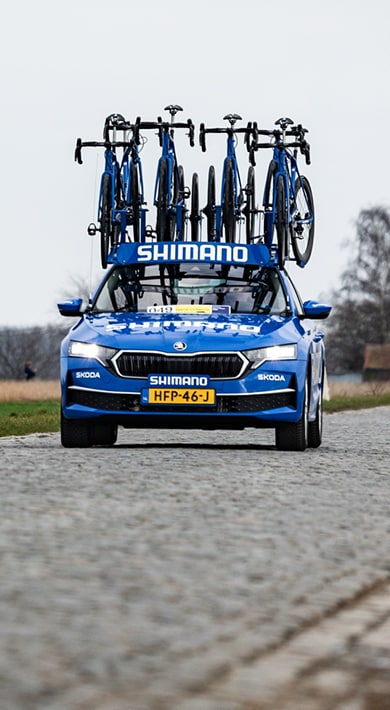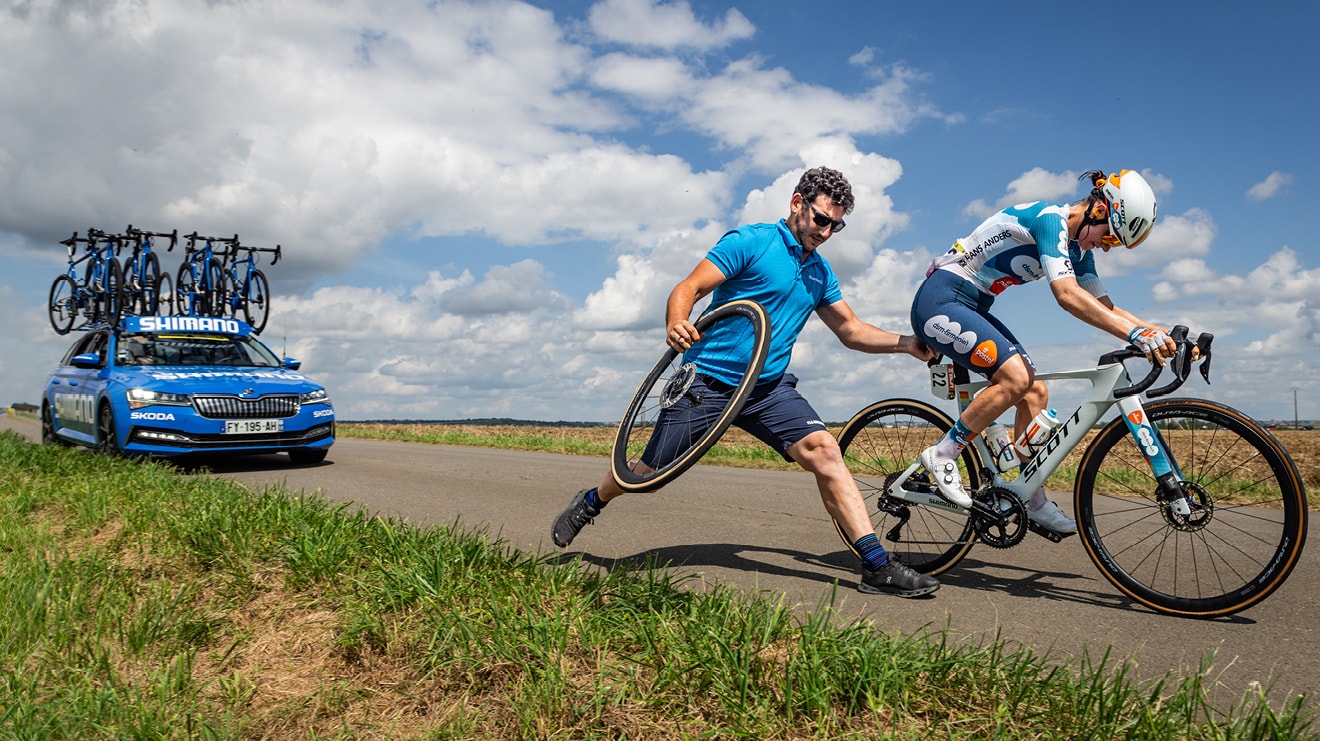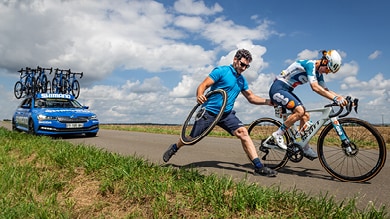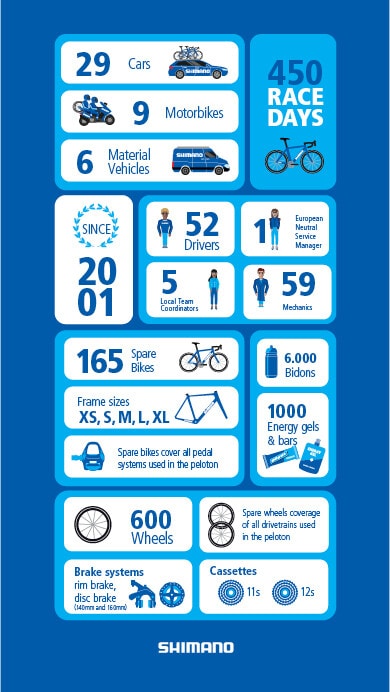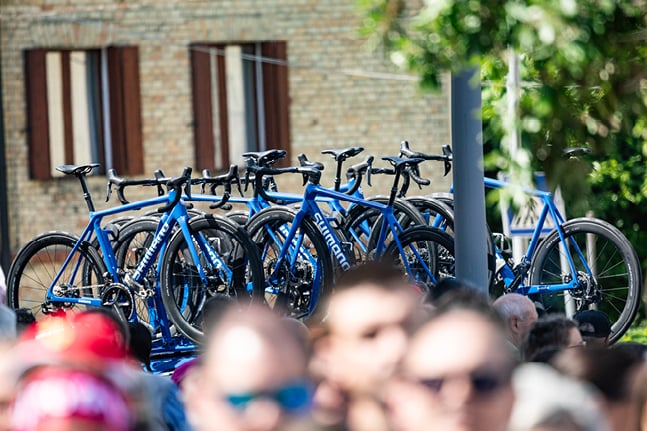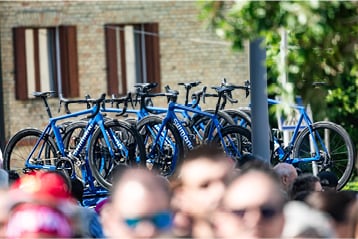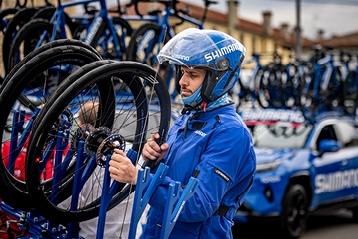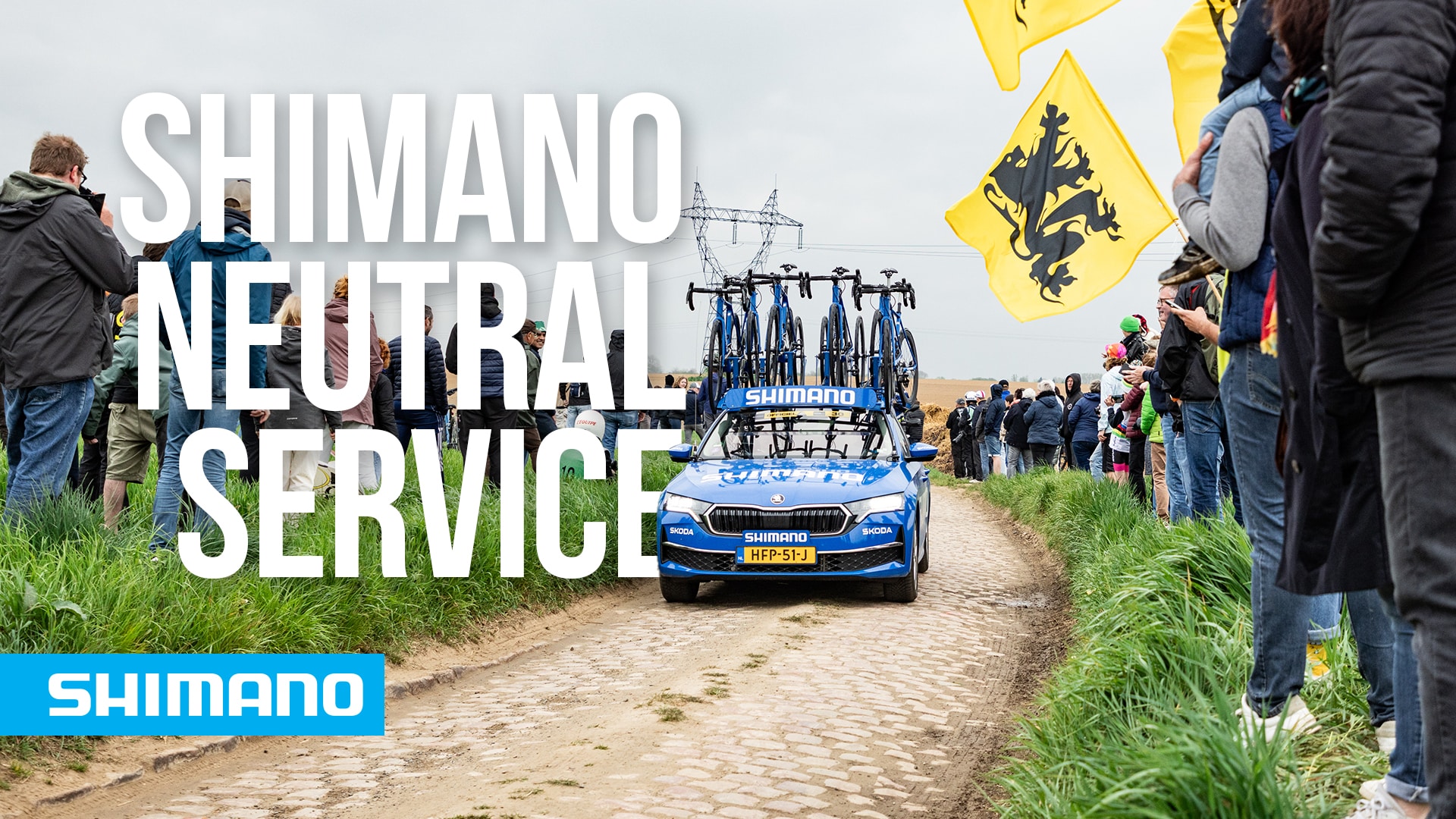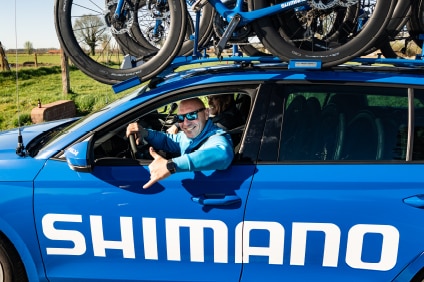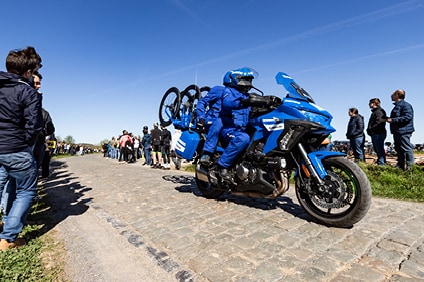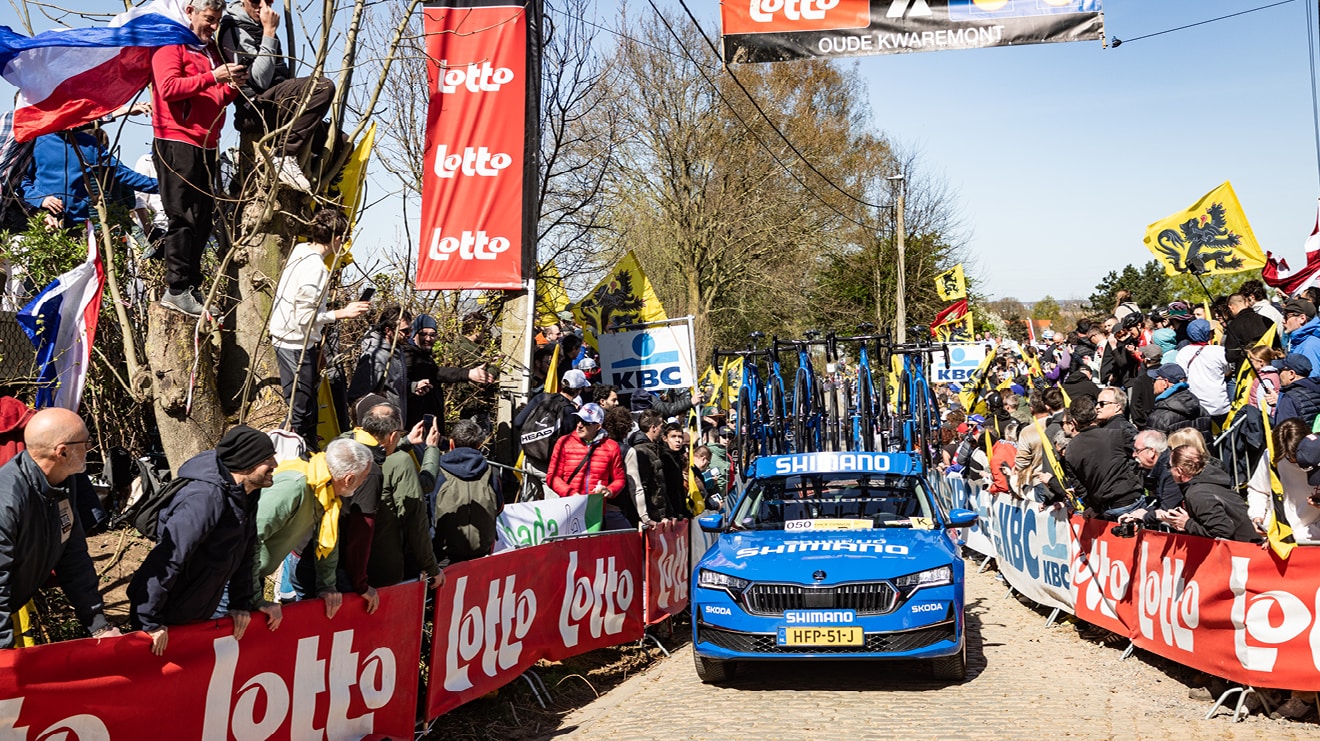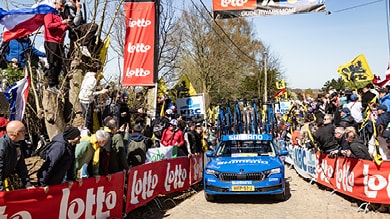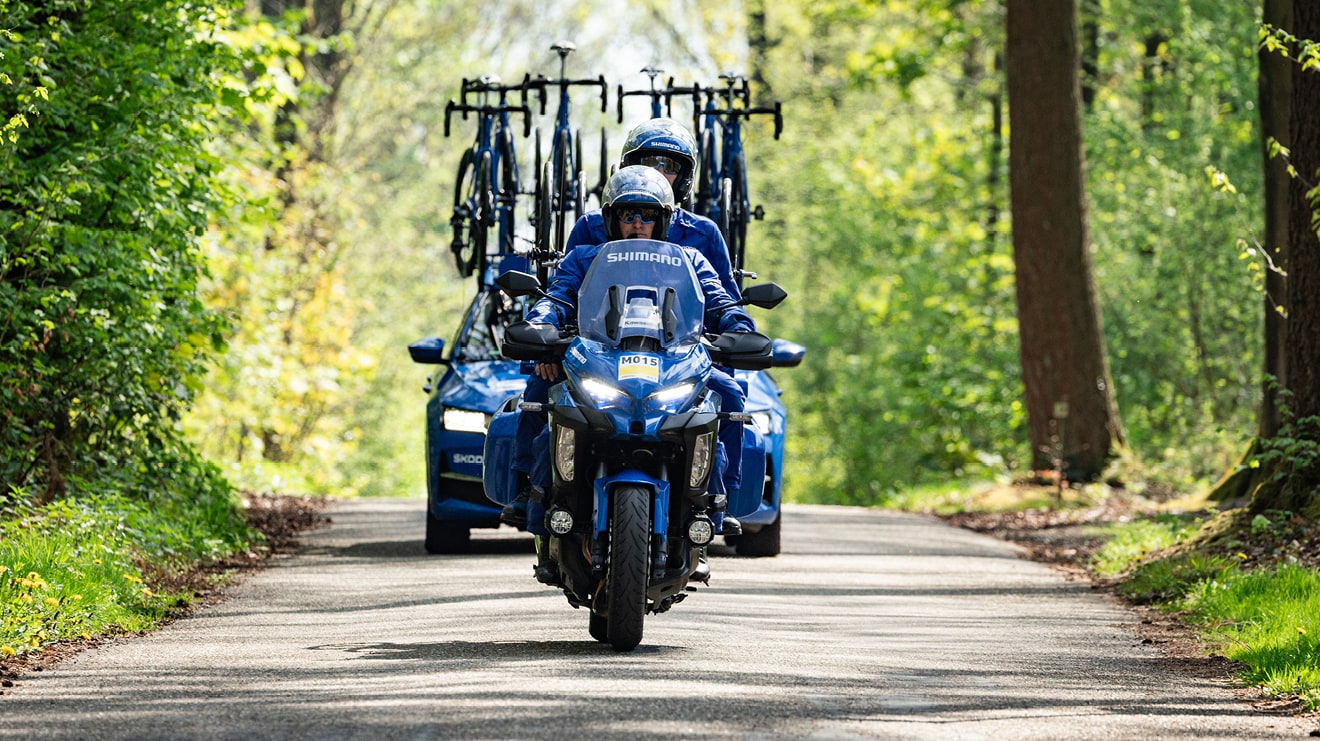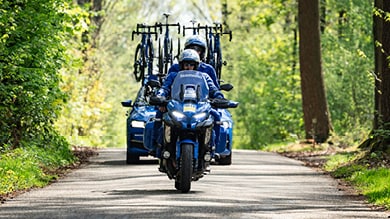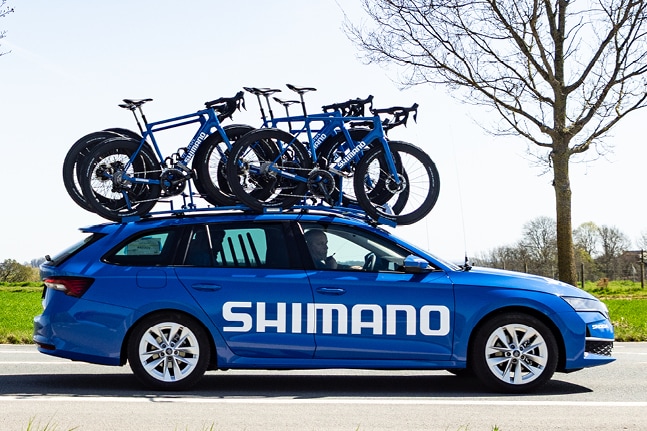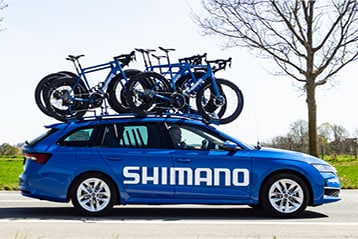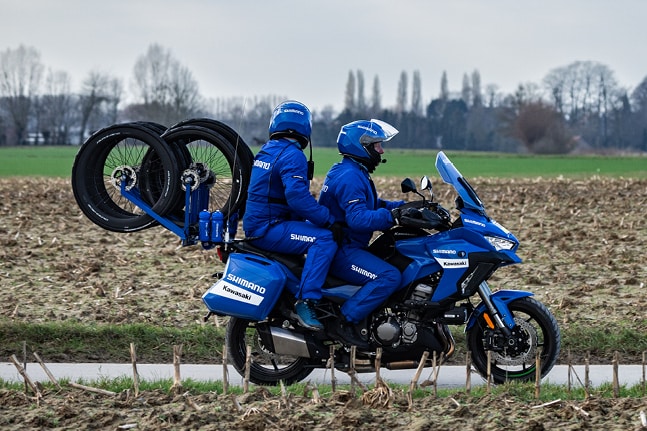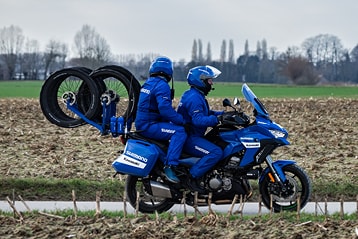Learn About our Blue Motorbikes and Cars with These Facts and Figures
In this article:
- Learn about the Shimano Neutral Service and all their work for the biggest events of the year.
- Did you know the Neutral Service is active at 450 race days every year?
- Here’s a Neutral Service fact: last year, we gave out more than 6,000 bidons to help keep riders hydrated!
You’ve seen them. The cool blue cars in the convoy, gliding up beside a struggling rider to swap a wheel or offer a bottle with all the calm of a seasoned maître d’. But there’s a lot more to Shimano Neutral Service than slick pit stops and well-timed handoffs. This is one of the sport’s most consistent, reliable, and unsung support systems—an operation that has become as much a part of the peloton as the jerseys and the flags.

